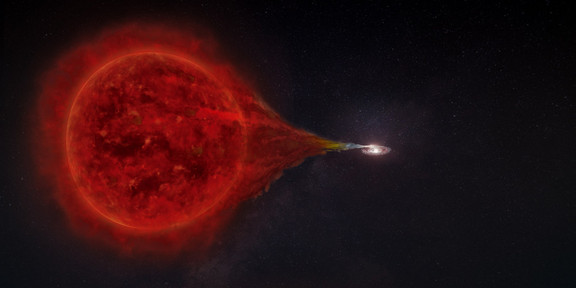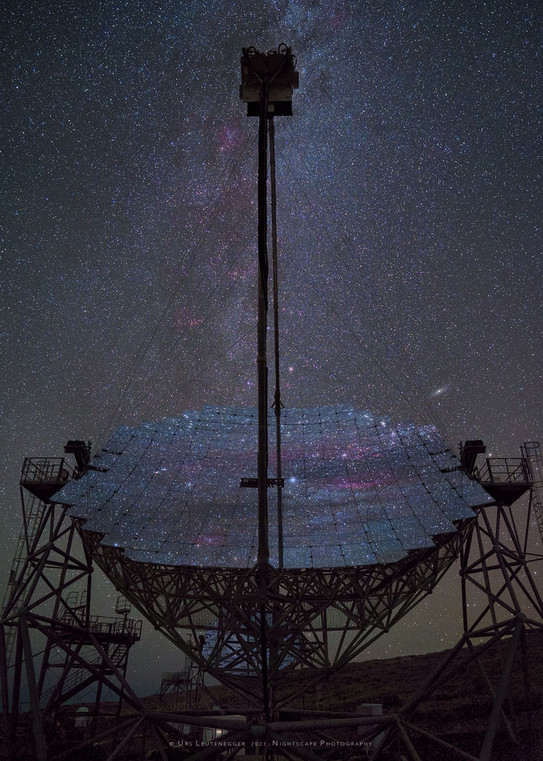MAGIC Telescope System observes violent Explosion on "Vampire Star"
- News
- Research

When a star dies, it first expands into a red giant star and then collapses into a stellar corpse, a white dwarf. This consists of a very dense material: a teaspoon of it would weigh about a tonne. Under certain circumstances, these stellar corpses can once again cause gigantic explosions: If the white dwarf has a companion that in turn enters the red giant phase, the hydrogen from the extended outer layers of the giant can succumb to the enormous gravitational pull of the dense dwarf and accumulate on its surface. The "dead" star thus extracts gas from the active star and is therefore also called a "vampire star". Occasionally, nuclear explosions can even occur on the surface of such systems, ejecting a large part of the hydrogen and the fusion products into space. Because the explosion is extremely bright, the process is also called a "stella nova" (new star, or "nova" for short). In some cases, the gas transfer is repeated and so is the nova outburst. This is called a recurrent nova.
Extremely energetic gamma rays
One of these recurring novae is the object RS Ophiuchi in our Milky Way, for which the next explosion was expected last year. On 8 August 2021, telescopes were actually able to detect the light from the explosion. One day later, astronomers from the MAGIC collaboration, an international association of around 160 scientists, pointed their telescopes at the ongoing eruption. The telescopes are a system of two 17 m diameter airborne Scherenkov imaging telescopes. Thanks to the good observing conditions on La Palma and the unique sensitivity of the MAGIC system, extremely energetic gamma rays were detected in the Nova, which could be attributed to accelerations of protons. "Observing celestial objects at such high energies opens unique windows into the extreme universe. We can thus study in detail the processes in which particles are accelerated in the universe to energies that are significantly greater than in terrestrial experiments," explains Dr Dominik Elsässer from the Faculty of Physics and member of the steering committee of the MAGIC collaboration.

Novae outbursts are in themselves less energetic than their sisters - supernovae, in which an entire star is ripped apart in an explosion - but occur much more frequently. The results suggest that while most of the high-energy cosmic rays that pervade the Milky Way probably come from other sources, novae appear to be surprisingly efficient at generating local regions of cosmic ray overdensity in their vicinity. To fully understand such explosive events, further observations are needed. The working groups at TU Dortmund University are involved in this, in particular with detector simulations and the development of intelligent analysis software. Since January 2022, researchers from TU Dortmund University, Ruhr-Uni Bochum and the University of Wuppertal have also been working in Collaborative Research Centre (SFB) 1491 to understand the processes involved in the cosmic interaction of different forms of matter. "Only the interdisciplinary interaction of particle physics, astrophysics, plasma physics and data science makes fundamental breakthroughs possible," says Prof. Wolfgang Rhode, Professor of Astroparticle Physics at TU Dortmund University and co-spokesperson of SFB 1491.
Full journal reference: https://www.nature.com/articles/s41550-022-01640-z
DOI: 10.1038/s41550-022-01640-z
Contact for queries:









